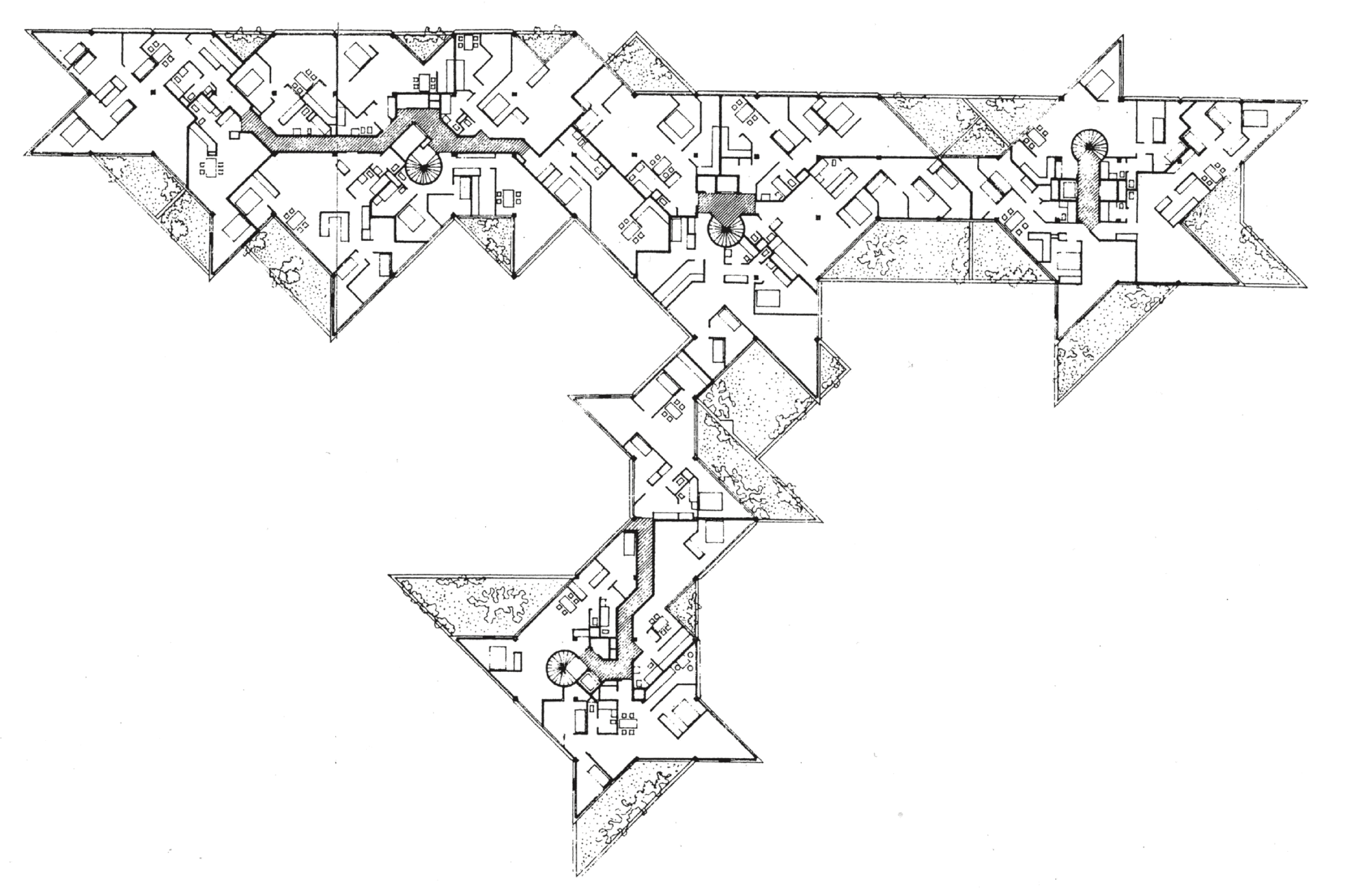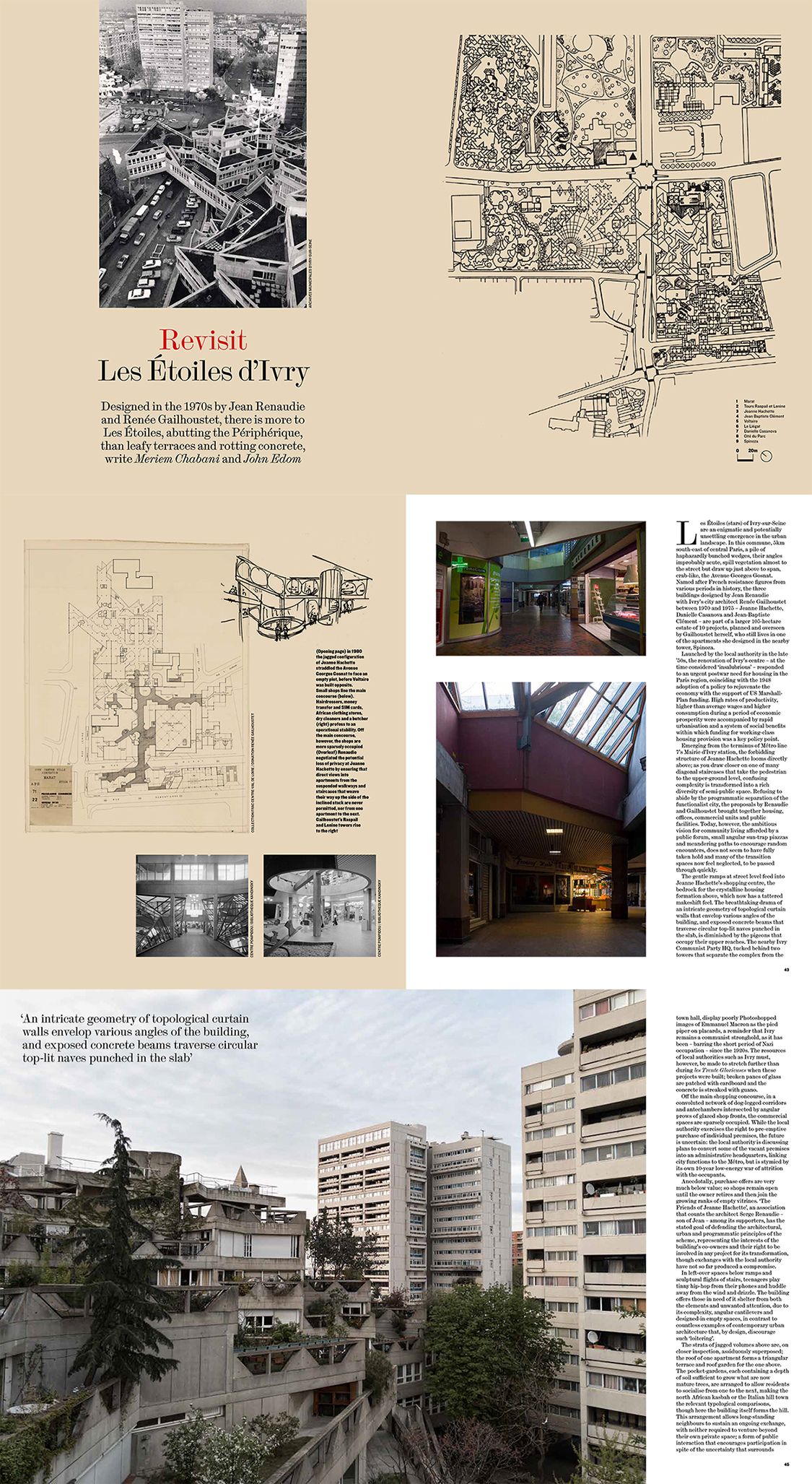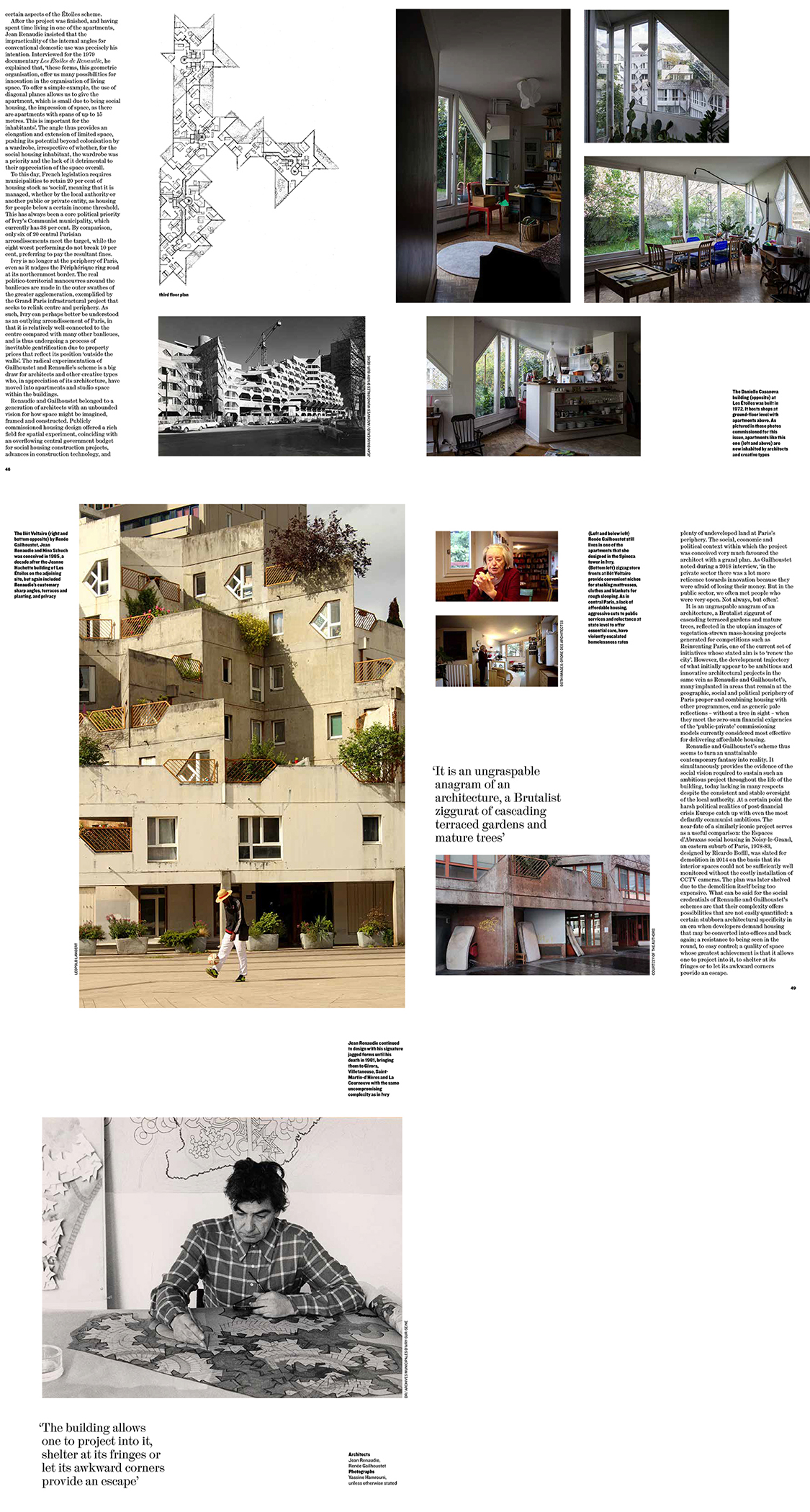Revisit : Les Étoiles d’Ivry

By Meriem Chabani and John Edom, Periphery, n°1461, May 2019.
Full article available on The Architectural Review website.
Les Étoiles (stars) of Ivry-sur-Seine are an enigmatic and potentially unsettling emergence in the urban landscape. In this commune, 5km south-east of central Paris, a pile of haphazardly bunched wedges, their angles improbably acute, spill vegetation almost to the street but draw up just above to span, crab-like, the Avenue Georges Gosnat.


It is an ungraspable anagram of an architecture, a Brutalist ziggurat of cascading terraced gardens and mature trees, reflected in the utopian images of vegetation-strewn mass-housing projects generated for competitions such as Reinventing Paris, one of the current set of initiatives whose stated aim is to ‘renew the city’. However, the development trajectory of what initially appear to be ambitious and innovative architectural projects in the same vein as Renaudie and Gailhoustet’s, many implanted in areas that remain at the geographic, social and political periphery of Paris proper and combining housing with other programmes, end as generic pale reflections – without a tree in sight – when they meet the zero-sum financial exigencies of the ‘public-private’ commissioning models currently considered most effective for delivering affordable housing.